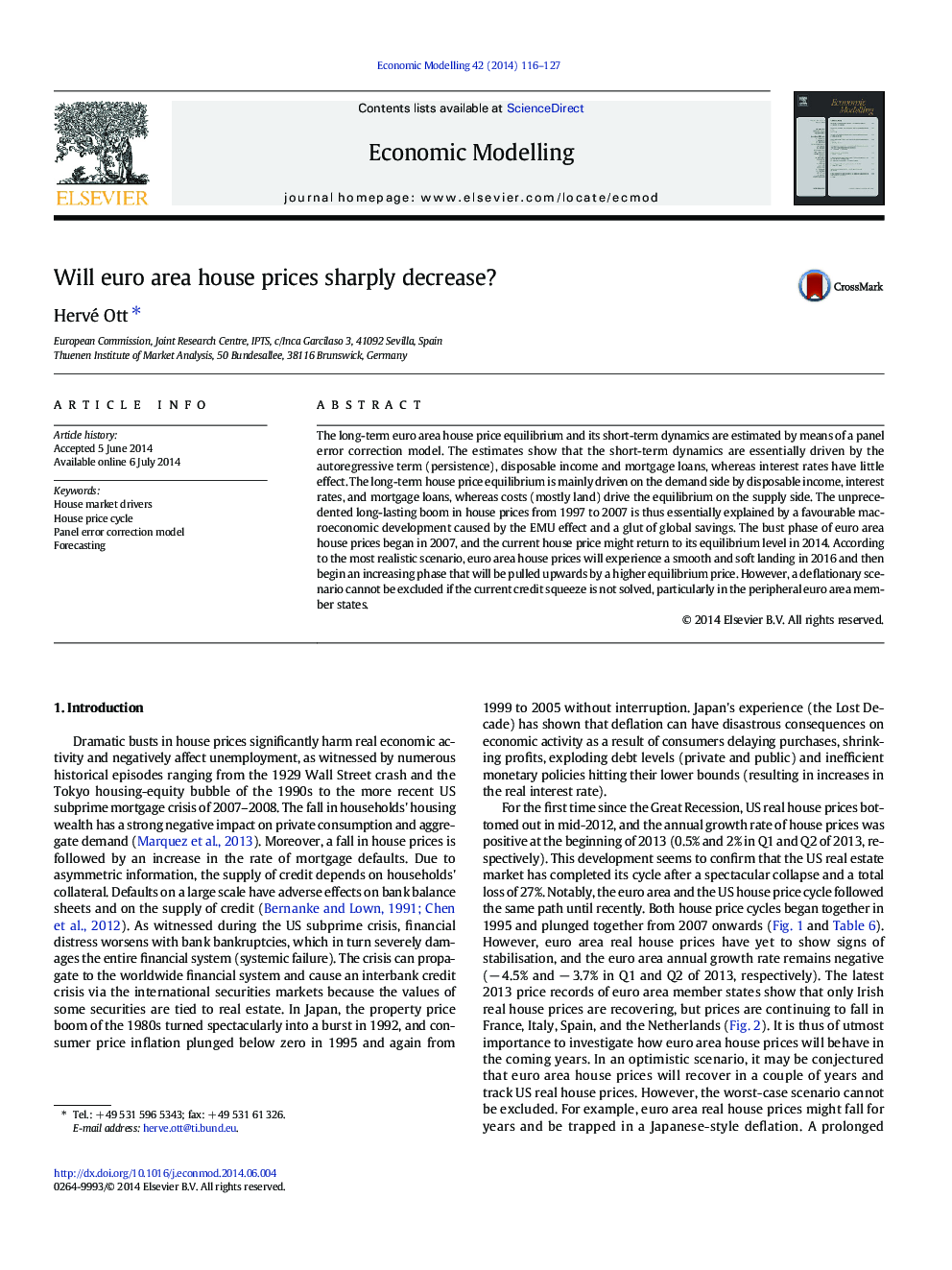| Article ID | Journal | Published Year | Pages | File Type |
|---|---|---|---|---|
| 5054011 | Economic Modelling | 2014 | 12 Pages |
â¢The euro area house price is estimated by means of a Panel Error Correction Model.â¢Euro area house prices are mostly driven by disposable income and mortgage loan.â¢Contrary to Japan the US house price recovered because of the credit supplyâ¢In the euro area a deflation scenario can be avoided if the credit squeeze ends.â¢Then the euro area house price might bottom out in 2016.
The long-term euro area house price equilibrium and its short-term dynamics are estimated by means of a panel error correction model. The estimates show that the short-term dynamics are essentially driven by the autoregressive term (persistence), disposable income and mortgage loans, whereas interest rates have little effect. The long-term house price equilibrium is mainly driven on the demand side by disposable income, interest rates, and mortgage loans, whereas costs (mostly land) drive the equilibrium on the supply side. The unprecedented long-lasting boom in house prices from 1997 to 2007 is thus essentially explained by a favourable macroeconomic development caused by the EMU effect and a glut of global savings. The bust phase of euro area house prices began in 2007, and the current house price might return to its equilibrium level in 2014. According to the most realistic scenario, euro area house prices will experience a smooth and soft landing in 2016 and then begin an increasing phase that will be pulled upwards by a higher equilibrium price. However, a deflationary scenario cannot be excluded if the current credit squeeze is not solved, particularly in the peripheral euro area member states.
